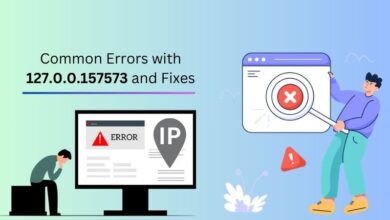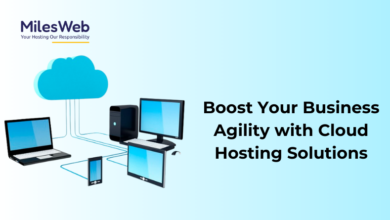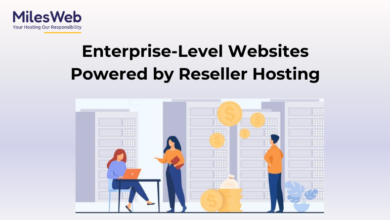Microsoft’s Intune is now Endpoint Manager-SCCM

Microsoft has combined Configuration Manager as well as Intune for PC monitoring, as well as streamlined licensing. This enables the implementation of a unified, end-to-end management platform that integrates Microsoft Intune’s capabilities, information, and development of intelligent behavior with Microsoft System Center Configuration Manager (SCCM). MECM offers adequate reliability and control which satisfies clients in which they are and assists them in making the transition to the data center. Microsoft too would include different managerial solutions throughout the Microsoft Endpoint Manager product. Hower with the SCCM training one can easily gain a deep understanding of the Microsoft endpoint manager.
What is Microsoft Endpoint manager?
Microsoft Endpoint Manager contributes to that same delivery of the business world and managerial expertise in order to maintain your information private, in both the cloud as well as on. Endpoint Manager includes resources and products for managing and monitoring smartphones, personal computers, virtualization software, connected systems, and data centers.
Endpoint Manager integrates providers you are already familiar with and use, such as Microsoft Intune, Configuration Manager, Desktop Analytics, co-management, and Windows Autopilot. These service providers are components of the Microsoft 365 heap and are intended to help control access, secure information, and react to and mitigate risk.
What is Microsoft Intune?
Microsoft Intune seems to be a cloud-based provider that specializes in mobile device management (MDM) as well as mobile app management (MAM). You have control over how one firm’s devices, such as smartphones, tablet devices, and laptops, have been used. Policy proposals can also be configured to regulate applications. You can, for instance, inhibit email messages from being sent to individuals outside of your company. Intune also enables employees to access gadgets for work or school. On digital phones, Intune means ensuring that your institution’s data is secure and therefore can separate company information on personal information.
Microsoft Intune would be a component of the Enterprise Mobility + Safety (EMS) suite. To command who seems to have access as well as how much they can connect directly, Intune incorporates Azure Active Directory (Azure AD). Also, it works with Azure Data Security to encrypt privacy. It is compatible only with Microsoft 365 product line. Microsoft Team members, OneNote, as well as other Microsoft 365 applications, for instance, can be deployed to devices. This technology helps employees in your company to be efficient across all of their phones even while protecting your organization’s data through initiatives you generate.
With the help of Intune, you can easily select the following things.
- You can go completely cloud to Intune and co-manage to Configuration Manager as well as Intune.
- To gain access to data but also networks, set policies and install configurations on personal as well as corporate-owned devices.
- Utilize and verify apps on both on-premises and portable devices.
- Control how people control as well as communicate safeguards to prevent your client data.
- Check to see if your sites and applications are responsible for compliance with security standards.
Managing devices:
In Intune, users collected. the data in the way that works best for you. You might like complete control over devices possessed by your organization, such as settings, functionalities, and safety. Throughout this strategy, technologies and their customers “register” in Intune. At first, when enrolled, people will obtain one’s rules as well as settings via Intune policy initiatives. Users can, for instance, configure passwords as well as PIN requisites, establish a Network connection, and configure threat protection, among other things.
Consumers do not want their firm’s managers to also have complete access to personal devices, also known as bring-your-own-device (BYOD). Provide consumers with choices throughout this strategy. For instance, if consumers would like complete access to one’s company’s assets, those who must register their systems.If such customers only need email as well as Microsoft Teams, utilize app protection regulations that restrict multi-factor authentication (MFA) to connect these apps.
Once equipment is registered and handled in Intune, admins can:
- View the devices that have been registered and obtain a list of devices that have direct exposure to the company’s assets.
- Configure devices to satisfy your safety and human requirements. For instance, you may want to prevent jailbreak gadgets from being used.
- Push accreditation to gadgets so that customers can quickly access the Wi-Fi system, or communicate to your network via a VPN.
- View reports on compatible and non-compliant servers and applications.
- If a connection is stolen, stolen, or no longer used, delete the company information.
Managing apps:
Intune’s mobile application management (MAM) is designed to protect business processes at the client-side, which includes mobile apps as well as store apps. Software governance could be used on both company-owned as well as efficient equipment.
Administrators can use Intune to handle apps in the following ways:
- Insert and allocate phone applications to customer segments and gadgets, such as individual user groups, particular application groups, and much more.
- Apps can be configured to begin or run to particular contexts allowed, and current apps mostly on devices can be updated.
- View reports upon whom the software is being used, as well as monitor their usage.
- Perform a judicious wipe, erasing only the company information from apps.
App protection regulations were a way Intune offers mobile device security. App security practices:
- To separate organizational information on personal data, utilize Azure AD individuality. As a result, personal data is stored separately from corporate IT recognition. Data accessed with organizational qualifications is given extra security safeguards.
- Restriction of actions including such copy-and-paste focus on saving, and perspective could indeed help preserve direct exposure on digital phones.
- Could be developed and deployed on phones which are registered with Intune, registered with yet another MDM provider, or not registered with any MDM provider. App protection regulations on being able to enroll phones can provide an additional layer of security.
A consumer, for instance, signs into another gadget using their firm’s login details. Their organizational identity grants them access to information that one’s personal identity does not. App protection laws govern whether this firm’s information is safe and communicated and is used. Once users sign into it with their private details, those same safeguards are not applied. As a result, IT retains control over organizational data whilst also consumers maintain ownership and confidentiality over their private information.
Intune can also be used in conjunction with other EMS services. One such feature extends the safety of your firm’s mobile applications above what is provided by the OS as well as any apps. Applications controlled by EMS possess access to a multitude of phone apps and information security features.
Conclusion:
In the above blog post, we had discussed the Microsoft intune in-depth and here I am attaching the SCCM tutorial if you want to know some more concepts in-depth related to this everlasting technology.





